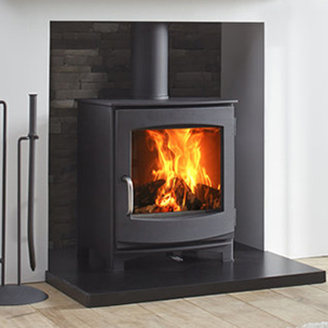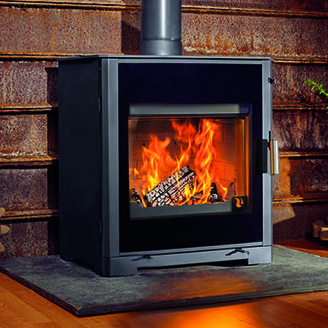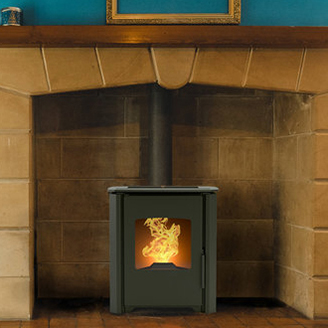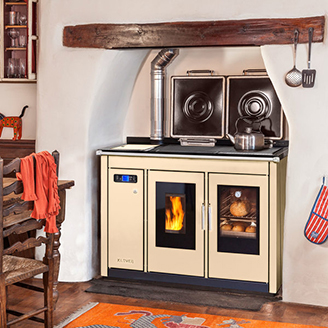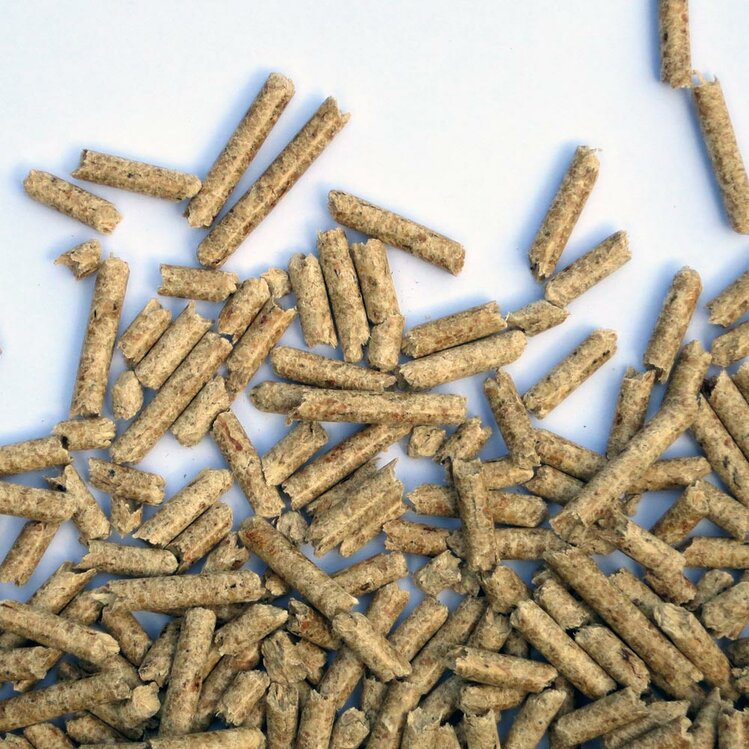Heating your home with wood
We are seeing an unprecedented rise in oil, gas and electricity prices at the moment, as well as potential fuel supply issues, and that upward trend looks set to continue. Insulating your home, and taking other efficiency measures are the logical first place to look. Once you've done that there are some alternative ways in which you can heat your home that can also reduce the running costs.
There is one homegrown alternative to fossil fuels which can significantly lower your heating bills, which is burning logs or wood pellets. Modern wood stoves are incredibly clean burning and efficient compared to older models.
This simple guide is to run you through the pros and cons of the different options available.
There are four main alternatives when it comes to heating with wood:
1) A woodburning stove this will heat the room where it is installed and spread a background warmth to other parts of the house
2) A woodburning boiler stove this can either be linked in with an existing oil or gas boiler, and will simply take over whenever it is lit’ or it can be big enough to do all the heating and hot water on its own
3) A wood pellet stove this is a clean, simple and automated way to heat the room where it is installed and spread a background warmth to other parts of the house
4) A wood pellet boiler stove this is a largely automated living room or kitchen stove, or a utility boiler in the garage, that will do all the house heating and hot water.
1) A woodburning stove
The simplest and cheapest option is to buy and install a woodburning stove. If it is lit in the evenings and weekends it will give you a good saving on your heating bills as well as providing a wonderfully cosy focal point. If it can be positioned where the warmth can spread to other parts of the house then it will make an even bigger difference.
Installed in or in front of an existing fireplace is the simplest and cheapest option and it won’t require much more than a closing plate and a flexible liner to be put down the chimney.
If it needs to go where there isn’t an existing chimney then your installer will fit a twin wall insulated flue that goes up through the house and out of the roof or through an exterior wall and up.
There is a huge range of good quality stoves available, starting from as little as £500, which will pay for themselves very quickly as well as giving you fuel security.
2) A woodburning boiler stove
The simplest way is to link a boiler stove in with your existing oil or gas boiler. Every time it is lit it will take over from the conventional boiler and can do the hot water as well as heating your house. This should give a good saving in heating bills but your existing oil or gas boiler is always there to keep things warm even if the stove isn’t on. The price of a boiler stove is higher than a dry woodburner and the installation will also cost more, but it has the potential to take over more of the heating than a dry stove and to do the hot water. Woodburning boiler stoves are a good alternative if you plan to use the stove frequently and have a good supply of wood.
You can have a boiler stove to do all the house heating without a back up conventional boiler, at which point it needs to be sized correctly to take care of the whole heat demand. You will need to have it going every day and be aware of the tonnage of wood you’ll have to burn over a year. It becomes more feasible if you have a thermal store, which will hold the heat until it is needed. With a good thermal store the boiler stove can be lit after work to heat the house and hot water and, once they are up to temperature, the stove will then give its heat to the thermal store. That stored heat should be enough to keep the house warm until the stove is lit the following evening.
It needs to be borne in mind that a good thermal store will cost as much as the stove and is large and plumbing in the whole system is considerably more involved. It is a good alternative if you have a large supply of wood and are happy to do the work.
If you want to run entirely off wood then the least time consuming to run, and the most efficient, is to fit a log gasification utility boiler and thermal store in an outhouse.
3) A wood pellet stove
This is the best alternative for those wanting a stove that can light itself on a timer, automatically adjust itself to the house temperature and doesn’t require the work and time that a woodburner does. Wood pellets are a clean, easily available fuel that are delivered to you in bags on a pallet that would be kept in the garage or a shed. You simply top up the stove once a day and take out the small amount of ash it produces once a week. You set the timer to when you want the stove to light itself so that you come down to a warm room in the morning or back from work to a warm house. Once it’s got the room warm enough it will turn itself down or off until it’s needed again and if it’s positioned well it will spread its warmth to the whole house.
A wood pellet stove needs a chimney just like a woodburner, although of a smaller size, and can be installed in a living room, kitchen or even in a hallway to spread the heat around.
A wood pellet stove costs more than a dry woodburning stove but, because it turns itself on and off automatically, it will inevitably take over from your gas, oil or electric heating a great deal more than a stove that has to be lit and re-loaded every time it is used. Wood pellets cost more than firewood but are a clean and convenient fuel that is burnt at an efficiency of more than 90%.
4) A wood pellet boiler stove
These come in a wide range of sizes and shapes with a choice of an elegant living room model, a woodburner style to fit in a fireplace, a kitchen range or a utility model in the garage. What they all share is the ability to take care of all the heating and hot water needs of a whole house, a super clean and highly efficient burn and a high level of automation. They all have an internal pellet hopper that would need to be topped up once a day but the rest is taken care of by the appliance itself. A wood pellet boiler stove is a straightforward alternative to fossil fuels and requires the minimum amount of involvement from the user.
The cost of the appliance is the highest of these four alternatives but can connect straight to your existing central heating system and is a complete replacement for your existing boiler. There are government grants available to encourage people to install them as part of the drive to decarbonise our heating sector.
Using a heat pump
Another option is to heat your home with a heat pump. A heat pump doesn't make heat, it moves it - in the case of an airsource heat pump it takes heat from the air and transfers it to your house. There may be the government Boiler Upgrade Scheme £5k grant available when you shift from oil or gas heating to either a biomass or heat pump. As long as the heat pump can heat your house when it is cold and it is set at 55ºC then it should have lower running costs given the rates set by the new price cap due to come into effect in October.
I hope that this has clarified some of the options available, do feel welcome to contact us to look further at what the best way forward might be for you.

